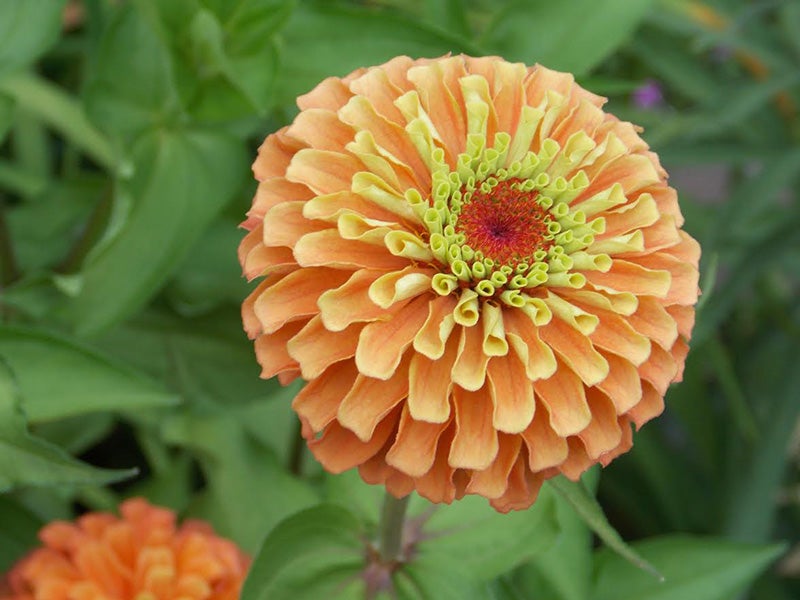Serendipity Gardens: Garden is highway for natural traffic
Published 9:00 am Saturday, August 18, 2018

- A queeny orange lime zinnia planted just for enjoyment has caught the attention of some bees, as well. - Carol Hegel Lang/Albert Lea Tribune
Serendipity Gardens by Carol Hegel Lang
Carol Hegel Lang is a green thumb residing in Albert Lea. Her column appears biweekly. Email her at carolhegellang@gmail.com.
My little bit of heaven right now is my pollinator paradise in the gardens along the driveway that are filled with hundreds of bees and flies and sprinkled with butterflies and birds enjoying the bounty of this paradise.
If I had to pick just one plant that brings in the most pollinators in this garden, it would be the rose milkweed still blooming prolifically. If you can plant just one milkweed in your garden, this is my top choice, and if you have a damp or wet location, this one is ideal — although where I have it planted, it is dry clay.

Carol Hegel Lang
Now that I have said this is my top pick, I will have to clarify that one sentence and say that my meadow blazing star is just beginning to open, and in another week it will be where you will find the monarchs feasting. If you want to attract monarchs, this is the plant you want. Both of these are native plants that require minimal care once they are established.
It seems like each and every plant has its signature features, so when you are planting a pollinator garden, you need to try to have a diverse planting to attract the most pollinators throughout the seasons. Goldfinch are flocking to the sunflowers now and once the cosmos set seed heads, you will find them snacking on those, too. The butterflies are enjoying nectar on the zinnias as well as the hummingbirds. In my gardens, I try to maximize the number of different birds, insects and butterflies that will come in search of food. Right now the monarch caterpillars are having a difficult time surviving with all the birds visiting the garden, and my little wrens are one of the biggest culprits. They travel down the stems of the plants looking for them. The balance of nature makes it very difficult for some of these species to survive in nature.
This fall, I need to really work on the Joe-pye weed that is taking over the gardens and making it very difficult for other plants to survive. My lilies are totally hidden from sight now that Joe is so large. I love this plant, but it can get out of control quickly, so if you plant it, make sure it has plenty of room.
Usually I plant the same varieties of zinnias every year, but I am a sucker for trying some of the new ones and this year was no different. The past several years, I have planted queen red lime, and when I saw another one available, I just had to order it — and I love it! This one is queeny orange lime and it is gorgeous. I don’t know why I have some that are plain lime/yellow, but I am definitely going to try and save some of those seeds and plant next year to see what happens with them. The pollinators aren’t as crazy about these particular zinnias, but I have seen smaller bees on them. Sometimes I plant flowers just for myself, and if the pollinators like them, all the better.
Another plant that seems to really draw in the pollinators are my hydrangeas and particularly pinky winky. The other day as I was watering in the area of this small tree, I stopped to watch all of the activity and was amazed to find literally hundreds of flies and bees on just this tree. My heart was thrilled to see all of this activity. I wish all of you could bring your lawn chair and sit and watch what is going on in my pollinator paradise and see how one small garden can do so much for them if planted with non-GMO and neonicotinoid-free plants, trees and shrubs with no insecticides or pesticides used.
The last of my lilies are blooming, and soon the autumn joy sedum will be filled with bees as the blossoms open, while the goldenrod is starting to show color as the late summer gardens are winding down.
“Some old-fashioned things like fresh air and sunshine are hard to beat.” — Laura Ingalls Wilder


